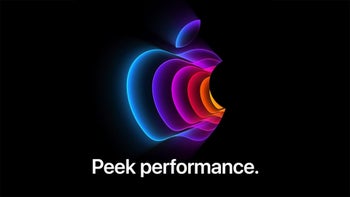LG Optimus 3D officially announced to usher us in a new dimension

Probably what was the most anticipated announcement at the Mobile World congress this year, the first 3D phone LG Optimus 3D, is now fully official.
The hardware specs were revealed yesterday, and the chipset that makes the stereoscopic imaging possible is the dual-core 1GHz OMAP4 from Texas Instruments. More about this chipset in our in-depth article here, where TI clearly shows it is at the forefront of digital signal processing for high-resolution still images as well as Full HD 1080p video recording, as well as the all-important stereoscopic HD 720p video recording and playback.
Early reports are flowing in that the LG Optimus 3D is scoring close to 3000 on the Quadrant benchmark test, so that makes it the fastest stock dual-core phone for now. The handset sports the so-called "Tri-dual" setup - dual-core, dual-channel and dual-memory, which, in its case is 4Gb LP DDR2. It's nice to finally see OMAP4 in a device, and one that breaks the 2D mold at that.
The two 5MP cameras on the back of the phone record stereoscopic 3D video at HD resolution, which will probably need some getting used to if you are hoping to get the most out of it, but LG announced partnership with the YouTube 3D channel, which places a dedicated app on the LG Optimus 3D to upload and share the 3D content you have captured with the phone easily. When you record in 3D, you are also seeing the content in 3D mode on the phone's display, a small, but important detail. The internal storage is 8GB, and we are curious how big those 3D video clips will turn out to be.
The LG Optimus 3D has a 4.3" LCD capacitive touchscreen with 480x800 pixels of resolution, with a glasses-free 3D parallax barrier screen technology, most likely use an overlay made either by Sharp (which makes the Nintendo 3DS screen overlay) or Masterimage 3-D, which again tricks the eye into the perception of depth, when looked at from a set distance range. If you go further than that range, or tilt your head too much, the 3D effect loses steam, but that's the price to pay if you don't want to wear glasses.
The good part about these 3D screen overlays is that they can be turned off, if 3D is not your cup of tea, so you can get back to 2D basics. Or, alternatively, you can output the 3D content to your TV via the HDMI port or the DLNA capability of the LG Optimus 3D. A 3D interface is also present with the click of LG’s 3D Hot Key which fires up a carousel with five 3D-dedicated UIs, like Gallery, Camera, Game&Apps, YouTube 3D and 3D Guide.
What's more important, LG has thought about the whole 3D ecosystem, as exemplified by the partnership with the YouTube 3D channel. We'll have Froyo on the phone, but it will be "upgradeable" to Android 2.3 Gingerbread later on, when the upgrade schedule is known. The LG Optimus 3D handset will come to Europe early in Q2, and roll out elsewhere shortly afterwards for a price yet unknown. Oh, last but not least, it supports almost all major video codecs out of the box, including DivX/Xvid and the .MKV Matroska container, in which Full HD movies are very often encoded. Kudos to LG for that.


The hardware specs were revealed yesterday, and the chipset that makes the stereoscopic imaging possible is the dual-core 1GHz OMAP4 from Texas Instruments. More about this chipset in our in-depth article here, where TI clearly shows it is at the forefront of digital signal processing for high-resolution still images as well as Full HD 1080p video recording, as well as the all-important stereoscopic HD 720p video recording and playback.
The two 5MP cameras on the back of the phone record stereoscopic 3D video at HD resolution, which will probably need some getting used to if you are hoping to get the most out of it, but LG announced partnership with the YouTube 3D channel, which places a dedicated app on the LG Optimus 3D to upload and share the 3D content you have captured with the phone easily. When you record in 3D, you are also seeing the content in 3D mode on the phone's display, a small, but important detail. The internal storage is 8GB, and we are curious how big those 3D video clips will turn out to be.
The good part about these 3D screen overlays is that they can be turned off, if 3D is not your cup of tea, so you can get back to 2D basics. Or, alternatively, you can output the 3D content to your TV via the HDMI port or the DLNA capability of the LG Optimus 3D. A 3D interface is also present with the click of LG’s 3D Hot Key which fires up a carousel with five 3D-dedicated UIs, like Gallery, Camera, Game&Apps, YouTube 3D and 3D Guide.
What's more important, LG has thought about the whole 3D ecosystem, as exemplified by the partnership with the YouTube 3D channel. We'll have Froyo on the phone, but it will be "upgradeable" to Android 2.3 Gingerbread later on, when the upgrade schedule is known. The LG Optimus 3D handset will come to Europe early in Q2, and roll out elsewhere shortly afterwards for a price yet unknown. Oh, last but not least, it supports almost all major video codecs out of the box, including DivX/Xvid and the .MKV Matroska container, in which Full HD movies are very often encoded. Kudos to LG for that.


Follow us on Google News









![A new Android bug is making it impossible to install new apps. Are you affected? [UPDATE]](https://m-cdn.phonearena.com/images/article/176703-wide-two_350/A-new-Android-bug-is-making-it-impossible-to-install-new-apps.-Are-you-affected-UPDATE.webp)



Things that are NOT allowed:
To help keep our community safe and free from spam, we apply temporary limits to newly created accounts: